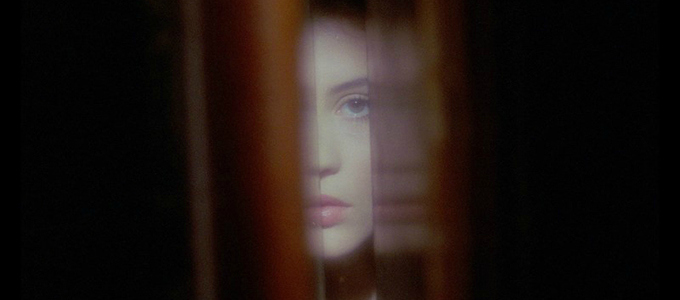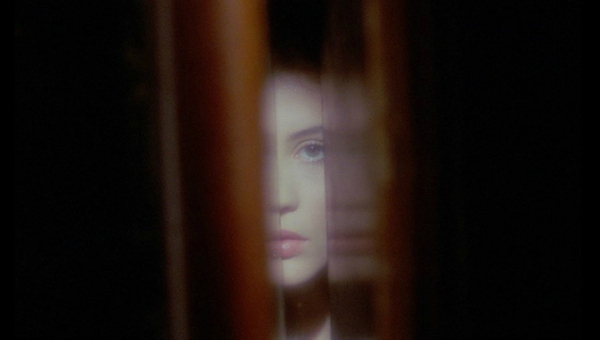 London, the end of the nineteenth century: a group of friends gather in the home of the eminent doctor and medical researcher Henry Jekyll to celebrate his engagement to the beautiful young aristocrat Fanny Osbourne. On the streets outside, there is a homicidal, sexually rapacious maniac on the loose. The festivities in Jekyll’s home are rudely interrupted as it emerges that this same maniac has somehow got into the house…
London, the end of the nineteenth century: a group of friends gather in the home of the eminent doctor and medical researcher Henry Jekyll to celebrate his engagement to the beautiful young aristocrat Fanny Osbourne. On the streets outside, there is a homicidal, sexually rapacious maniac on the loose. The festivities in Jekyll’s home are rudely interrupted as it emerges that this same maniac has somehow got into the house…
The Jekyll and Hyde story is now so familiar that everyone knows that the two men are actually the same person. In fact, Robert Louis Stevenson’s original novella The Strange Case of Dr Jekyll and Mr Hyde only reveals the supernatural nature of their relationship towards the end of the narrative. Walerian Borowczyk’s take on the tale is unusual among cinematic adaptations in preserving the mystery long into the film: the only other mainstream version that does this is Stephen Frears’ uneven but underrated MARY REILLY, and even that does not use a completely different actor for Hyde, as Borowczyk does here (the terrifying Gérard Zalcberg as Hyde taking over from Udo Kier’s unusually restrained Jekyll).
During a dull dinner-table argument there are flashes of horrible scenes of violence
Other than this, the film is a conventionally unfaithful adaptation. After starting with an incident involving a young girl as Stevenson does, Borowczyk’s retelling is quite different, and has been telescoped into a single, action-packed (if somewhat incoherent) evening. Unsurprisingly, given Borowczyk’s well-known interest in the female form, the story, almost wholly devoid of women in Stevenson’s version, is now full of them: indeed, the original French title of the film is DOCTEUR JEKYLL ET LES FEMMES. In addition to Jekyll’s fiancée — naughtily named after Stevenson’s own wife — he now has a limping, piano-playing mother, and then there are the various wives and daughters brought along by the male guests. The men, by contrast, are named after Stevenson’s characters, but with a few exceptions such as Jekyll’s colleague Dr Lanyon (played by Jess Franco regular Howard Vernon) they are given new roles. Sir Danvers Carew, an ‘aged beautiful gentleman’ in the novella, is now a blustering, blundering army general, recently returned from Africa and resplendent in his red tunic.
The male guests include the usual representatives of the upper echelons of British society — doctor, lawyer, priest, army officer — and since Jekyll’s servants, an Indian butler and a black housemaid, can be taken to symbolise the British Empire’s colonial subjects, it seems likely that Borowczyk is interested in satirising the hypocrisy and repression of Victorian society. During a dull dinner-table argument about materialism and transcendentalism, for instance, there are flashes of horrible scenes of violence, as if the diners’ subconscious desires are taking flight. (These are also, as it turns out, portents of things to come.) Later, General Carew’s daughter seems only too happy to defy her father’s overbearing — and perhaps more than paternal? — authority when Mr Hyde comes out to play. By the end, with the corpses piling up and books and paintings put to the flame, there is the unmistakeable impression, as with Cronenberg’s SHIVERS, that the transformed state, with its loss of inhibitions and its surrender to pleasure, may be preferable to ordinary human existence.
Many of Borowczyk’s defining features are here, including his very individual approach to sex
One drawback to the film is that it was clearly planned to be released in both a French and an English version. Borowczyk tries to avoid some of the perils of the inevitable dubbing by using disembodied voices or hiding the actors’ mouths when they speak, but the result of this is to make the images and sound seem oddly independent of each other, and in the process emphasise the inferiority of the dialogue. (The electronic music, by contrast, is highly atmospheric and employed very effectively.) None of this does the supporting cast any favours: for instance, Patrick Magee, who stars as General Carew, was a very fine actor — a favourite of both Stanley Kubrick and Samuel Beckett — but you might not guess that from this film. The plotting and characterisation also defy logic, consistency and continuity.
While viewers new to Borowczyk’s work may end up scratching their heads at this film, his fans will probably come away very satisfied. Many of his defining features are here: the beautiful use of diffused light; the unexpected, often witty juxtapositions of scenes; the emphasis on people’s faces (particularly that of his acteur fétiche Marina Pierro, who plays Fanny); the elegant production design (here by Borowczyk himself), with its fondness for unusual details; the curious combination of cool observation and rapt concentration. Above all, they are likely to be amongst the only viewers who are comfortable with his very individual approach to sex — and in this film the connection between sex and violence is quite explicit (in both senses). But even unconvinced spectators may find themselves impressed by the film’s mesmerising transformation scene, as Fanny looks on in fascination from her hiding-place. Along with the film’s extraordinary final sequence, this is one of its undoubted highlights. It may even make up for the longueurs and peculiarities of the preceding 45 minutes.
httpvh://www.youtube.com/watch?v=AHmXm3_dbFs

